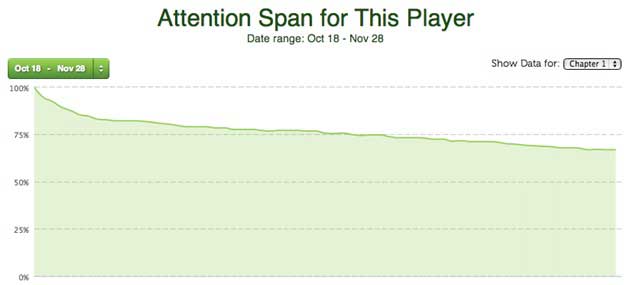I can pretty much guarantee that you or people on your team have said or heard the words, "We're definitely going to use more video in the new year"—and you're not alone.
According to the third annual Reel SEO Video Marketing Survey, 93% of marketing professionals used video as part of their strategy in 2013, and 71% increased their video spend from 2012 levels.
But, as budgets increase, marketers are going to need to set some realistic content goals to realize ROI.
To get you started with a practical approach, I've compiled a to-do list for jumpstarting your video marketing. If you implement even a few of the following initiatives, you'll impress prospects, demonstrate a commitment to a medium your customers crave, and remain relevant and competitive within your industry.
Let's take a look at how you can make 2014 the year you excel with video.
1. Schedule a biweekly video release
I know what you're thinking: "Mike, at the rate I'm going, it's a challenge to make one video a month!" But it's all about how you dedicate your resources. Frequent, and thereby timely and relevant, video releases are made far easier if you invest in someone dedicated to video production.
Whether hiring a director of video strategy (as we've seen major B2B companies doing) or a videographer who can shoot and edit your footage all in one, investing in amazing talent can make all the difference between proactive and merely reactive video campaigns.
If you can only invest in one dedicated hire, I'd recommend a videographer. A good videographer should be able to produce at least one short video a week or 52 videos a year for around $1,000 per video, on average.
2. Modify your video strategy based on engagement data
After committing to a regular video schedule, you'll want to keep the overall content direction loose. There's no use shooting a month's worth of video in two weeks when your video engagement data might reveal that your videos are ineffective at holding viewer attention.
If your video analytics show that viewers drop off after 30 seconds, it could mean that your 15-second intro is too long. If you shoot videos from week to week, analyzing the data after each week, you'll have the opportunity to modify your message based on how your potential customers are actually interacting with your content.
3. Keep your content focused and fluff-free to hit a minimum of 60% audience retention
As noted, analytics can reveal whether your videos are working to hold your audience's attention, and prolonged engagement is something you can aim to improve over time.
For most videos, audiences will drop off long before the end; this year, you should aim to have less than 60% of your audience drop off before the final call to action. How? By keeping your content focused.
If you design your scripts to qualify your target audience immediately (e.g., "this video is for marketers"), you'll notice a steep drop in attention initially (people will qualify themselves: "I'm not a marketer, I'm out"), but you'll end up holding your actual target's attention for the entire video—and, hey, that's the goal!
If your target audience typically drops off really early, keep altering your video scripts with the aim of maintaining their attention for longer. That is something we do at Vidyard, and we've become pretty good at retention based on what we learn from past videos. In a recent campaign for Dreamforce, we released a video via targeted email to let our customers know that we'd be at the event to meet with them. The video, a spoof, featured a sales rep acting as Chris Farley's Tommy Boy character. And it held attention span like we've never seen before:

As you can see in the chart, 70% of people watched the 1:05 minute video until the very end.
4. Create a video for every part of the marketing funnel
If your video strategy ended after you released an explainer video, you're doing it wrong.
Leads need various pieces of information at different parts of the sales funnel, so create videos to engage and nurture at every step of the customer life-cycle.
Prospects are doing more than half of product research independently these days, and having video on your site to educate them during this process is perfect; it's the next best thing to getting to pitch in person.
5. Get your customers on camera!
Forget the text-based customer testimonial; get your customers to say great things about you on camera. A video case study is a great way for potential clients to become situated with your products or services. A video hub of customer success stories is hugely persuasive, because a customer's emotion really comes through via video. Prospects can view several clips when visiting your site in a short time, so make sure video testimonials by representatives of multiple industries are available 24/7.
6. Get your sales team on camera!
A well-placed, genuine piece of video content is like the salesperson who never sleeps, and it's even better when your actual sales reps are involved! Capture your message with approachable, enthusiastic members of your sales team so your prospects can put a face to the person they should reach out to if they have questions. Your video call to action can include your sales reps' contact info.
7. Make funny and timely holiday videos
When scheduling your regular releases, plan for funny holiday features. These are just as much fun for you and your team to make as they are for prospects and customers to watch. Many of your teammates new and old will surprise you with their talents, and you'll have a blast in the process. Check out our Frankenbot Halloween video to see what I mean.
8. Commit to tracking your performance
It's crucial you understand how your library of amazing video marketing performs with your audience. Your YouTube channel is a great way to gain a presence in relation to search, but it's not enough on its own to connect your videos to ROI. You must track and measure audience engagement for video so you'll know what to modify or amplify within your strategy.




